卒業式の朝、凛とした袴姿の学生たちを見かけると、春の訪れを感じる方も多いのではないでしょうか。女性の袴スタイルは、単なる卒業式の衣装というだけでなく、日本の女性史における知性と自立の象ektenとして、特別な意味を持っています。そのルーツは明治時代、学問の道を志す女学生たちのための制服として採用されたことに始まります。動きやすさと品格を兼ね備えた袴は、彼女たちの新しい時代を切り拓く翼となりました。現代では、その伝統を受け継ぎつつも、より華やかに、より自由に、女性たちの門出を彩るファッションとして愛されています。
- 学びの自由の象徴「行灯袴」: 現代の女性袴の原型である「行灯袴(あんどんばかま)」は、股の仕切りがないスカート状の構造をしています。これは、活動的な女学生のために、動きやすさを追求して考案されたものでした。
- 『はいからさんが通る』が起こした革命: 昭和後期から平成にかけて袴スタイルが卒業式の定番となった背景には、大人気漫画『はいからさんが通る』の影響があります。矢絣の着物に海老茶の袴、大きなリボンと編み上げブーツというスタイルは、今なお多くの人の心を掴んでいます。
- 足元が語る個性、ブーツか草履か: 袴の足元にはブーツと草履という二つの選択肢があります。ブーツは明治期の女学生を彷彿とさせるモダンで活発な印象を、草履は古風でしとやかな伝統美を演出し、どちらを選ぶかで全体の雰囲気が大きく変わります。
学び舎から生まれた女性の晴れ着
女性が袴をはく習慣が一般化したのは、明治時代のことです。それまで男性の衣服であった袴を、女性のために改良し、女学生の制服として導入する動きが始まりました。その先駆けとなったのが、教育者の下田歌子らが設立に関わった華族女学校(後の学習院女子)です。
当時の女性の普段着であった着物と帯では、椅子に座って授業を受けたり、体育を行ったりするには不便でした。そこで考案されたのが、股の部分に仕切りのないスカート状の「行”灯”袴(あんどんばかま)」です。これにより、女学生たちは裾を気にすることなく、学業に専念できるようになったのです。海老茶色の袴に身を包み、勉学に励む女学生の姿は、当時「ハイカラ」と呼ばれ、新しい時代の女性の象徴として、多くの人々の憧れの的となりました。
卒業式に袴が定着した理由
明治期に女学生の制服として広まった袴ですが、昭和に入り洋装の制服が普及すると、日常的には姿を消していきました。しかし、この袴スタイルが再び脚光を浴び、卒業式の定番として定着する大きなきっかけとなったのが、1970年代に連載が開始された大和和紀氏の漫画『はいからさんが通る』です。
大正時代を舞台に、袴姿で自転車を乗りこなし、自由奔放に生きる主人公「花村紅緒」の姿は、多くの読者の心を魅了しました。この作品がアニメ化、そして1987年に映画化され大ヒットすると、そのスタイルに影響を受けた女子大生たちが、卒業式に袴を着用するようになりました。かくして、「卒業式=袴」というイメージが全国的に広まり、知的で華やかな門出の衣装として現代に受け継がれることになったのです。
袴を彩る着物と小物たち
袴スタイルは、袴そのものだけでなく、上に合わせる着物によっても大きく印象が変わります。最も一般的なのは「二尺袖(にしゃくそで)」と呼ばれる、袖丈が約76cmの着物です。袖が短いため動きやすく、若々しく可愛らしい印象を与えます。卒業式向けのレンタル衣装として最も多く取り扱われているのが、この二尺袖です。
一方、成人式で着用した「振袖(ふりそで)」を袴に合わせることも可能です。振袖は二尺袖よりも袖が長く、柄も豪華なため、非常に格調高く華やかな着こなしになります。大切な振袖を再び活用できるという点でも、人気の選択肢となっています。足元は、草履を合わせると古典的で上品な印象に、ブーツを合わせるとモダンで活動的な印象になり、自分らしいコーディネートを楽しむことができます。
新たな門出を祝う特別な装い
現代において、女性の袴は卒業式の礼装として確固たる地位を築いています。小学校から大学まで、多くの卒業生が人生の節目を袴姿で迎えます。伝統的な矢絣(やがすり)や無地の袴に加え、近年では色鮮やかなものや、刺繍やグラデーションが施されたデザイン性の高い袴も豊富に登場し、選択の幅は大きく広がりました。
また、卒業式だけでなく、謝恩会やパーティー、あるいはレトロな街並みを散策する際のファッションとして袴を取り入れる人も増えています。伝統的なルールに縛られすぎず、洋服の小物やヘアスタイルと自由に組み合わせることで、袴は「特別な日の礼装」から「自己表現のためのおしゃれ着」へと、その可能性を広げ続けています。
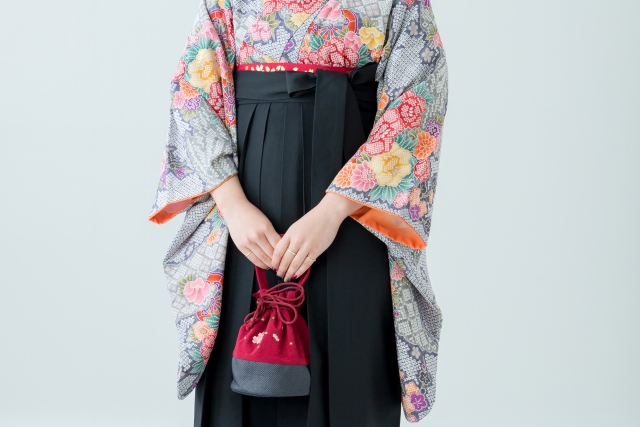
解説ポイント①:学びの自由の象徴「行灯袴」
女性袴の歴史を語る上で欠かせないのが、股にマチ(仕切り)がないスカート状の「行灯袴(あんどんばかま)」の存在です。従来の男性用袴(馬乗袴)はズボンのように左右が分かれており、活動的ではあるものの、女性が着用するには着脱や日常の所作に不便な点がありました。明治時代、女子教育の黎明期に、教育者たちが学問の場にふさわしい服装を模索する中で、この行灯袴が考案されました。宮中の女官が用いた袴などを参考に、女性らしさを損なわずに、なおかつ椅子に座る、歩くといった動作を妨げない実用性を追求したのです。この袴の登場によって、女性たちは服装による身体的な制約から解放され、より自由に知的な活動に打ち込むことが可能になりました。まさに、女性の社会進出と学びの自由を物理的に支えた、画期的な発明だったと言えるでしょう。
解説ポイント②:『はいからさんが通る』が起こした革命
1980年代後半まで、大学の卒業式で袴を着用する学生は少数派でした。この状況を一変させ、袴を卒業式のアイコンへと押し上げたのが、漫画『はいからさんが通る』のメディア展開、特に1987年の南野陽子主演による映画の大ヒットです。作中で描かれた、矢絣の二尺袖着物に海老茶色の袴、髪には大きなリボンを結び、足元は編み上げブーツというヒロイン・紅緒のスタイルは、当時の若者たちに強烈なインパクトを与えました。「伝統的でありながら、西洋の文化を取り入れたモダンで活発な女性像」は、まさに新しい時代へ羽ばたこうとする女子大生たちの心境と重なったのです。このブームをきっかけに、レンタル衣装業界も卒業式向けの袴の取り扱いを本格化させ、「卒業式には袴を着る」という文化が急速に全国へ広まっていきました。一つの作品が、現代に続く文化的慣習を創り出した、非常に興味深い事例です。
解説ポイント③:足元が語る個性、ブーツか草履か
袴スタイルの印象を決定づける重要な要素が、足元の選択です。ブーツを合わせるスタイルは、明治・大正期の女学生を彷彿とさせる「ハイカラ」な雰囲気を醸し出します。実用面でも、草履に不慣れな人でも歩きやすく、まだ肌寒い3月の卒業式シーズンにおいて防寒対策になるというメリットがあります。また、ヒールのあるブーツを選べば、背を高く見せ、より颯爽とした立ち姿を演出できます。袴の丈をブーツの足首が少し見えるくらいに短めに着付けるのが、バランスの良い着こなしのポイントです。一方、草履を合わせると、一気に古典的で優美な印象になります。足袋の白さが際立ち、しとやかでフォーマルな雰囲気を強調します。こちらは伝統的な和装の美しさを大切にしたい場合に最適です。どちらを選ぶかは、単なる好みの問題だけでなく、自分が卒業式という日にどのような女性像を表現したいか、というメッセージにも繋がる選択と言えるでしょう。
参考文献
- 【袴の由来や歴史】女袴の誕生秘話 | 卒業はかまレンタル 袴美人.com
- 卒業式はなんで袴?いつから流行った?歴史や時代背景から理由を分析 – マリアージュコトブキ
- 『はいからさんが通る』が起こした「卒業式」にまつわるブームとは? – ニッポン放送 NEWS ONLINE
- 卒業式の袴に合わせる着物は?振袖でも大丈夫? – きもの永見
- 袴にブーツを合わせるメリットとお着物×ブーツの歴史 | 福島市・郡山市の振袖・着物専門店いわき
【English Article】
Not Just for Graduations! The Splendid World of Women’s Hakama
When you see students in dignified hakama on the morning of a graduation ceremony, many of you may feel the arrival of spring. The women’s hakama style is not merely graduation attire; it holds a special significance as a symbol of intelligence and independence in Japanese women’s history. Its roots lie in the Meiji era, when it was adopted as a uniform for female students aspiring to academia. The hakama, combining ease of movement with elegance, became the wings for these women to forge a new era. Today, while inheriting this tradition, it is loved as a fashion that celebrates women’s new beginnings in a more splendid and freer way.
- The “Andon Bakama”: A Symbol of Academic Freedom: The prototype for modern women’s hakama, the “andon bakama,” features a skirt-like structure without the separating gore. It was devised to pursue ease of movement for active female students.
- The Revolution Sparked by “Haikara-san ga Tōru”: The popularity of the manga “Haikara-san ga Tōru” (Here Comes Miss High-Collar) was a major influence behind the hakama style becoming a graduation staple from the late Showa to the Heisei era. The look of a kimono with arrow patterns, a maroon hakama, a large ribbon, and lace-up boots still captures the hearts of many.
- Footwear that Expresses Individuality: Boots or Zōri? There are two footwear choices for hakama: boots and zōri sandals. Boots give a modern, active impression reminiscent of Meiji-era schoolgirls, while zōri create a classic, graceful traditional beauty, and the choice dramatically changes the overall atmosphere.
Ceremonial Attire Born from Halls of Learning
The custom of women wearing hakama became widespread in the Meiji era. A movement began to adapt the hakama, which had been male clothing, for women and introduce it as a uniform for female students. A pioneer in this was the Kazoku Jogakkō (Peeresses’ School), which educator Utako Shimoda was involved in founding.
The typical women’s attire of the time, a kimono with an obi sash, was inconvenient for sitting on chairs in class or for physical education. The solution devised was the “andon bakama,” a skirt-like garment without a divider between the legs. This allowed female students to concentrate on their studies without worrying about their hems. The sight of female students dressed in maroon hakama and dedicated to their studies was called “haikara” (high-collar, a term for modern and Westernized) and became a symbol of the new era’s woman, admired by many.
Why Hakama Became Standard for Graduations
While the hakama spread as a school uniform for girls in the Meiji period, it disappeared from daily life in the Showa period as Western-style uniforms became common. However, a major catalyst for this style to regain the spotlight and become a graduation staple was the manga “Haikara-san ga Tōru” by Waki Yamato, which began serialization in the 1970s.
Set in the Taisho era, the image of the protagonist, Benio Hanamura, living freely, riding a bicycle in her hakama, captivated many readers. When the work was adapted into an anime and became a blockbuster movie in 1987, female university students influenced by the style began to wear hakama to their graduation ceremonies. Thus, the image of “graduation = hakama” spread nationwide and has been passed down to the present day as an intellectual and splendid attire for new beginnings.
Kimono and Accessories that Adorn the Hakama
The impression of a hakama style changes greatly not just by the hakama itself, but also by the kimono worn with it. The most common is a type of kimono called “nishaku-sode,” which has a sleeve length of about 76 cm. The shorter sleeves make it easy to move in and give a youthful, cute impression. This nishaku-sode is the most widely available type of rental attire for graduation ceremonies.
On the other hand, it is also possible to pair a hakama with a “furisode,” the long-sleeved kimono worn for the Coming-of-Age ceremony. As the furisode has longer sleeves and more luxurious patterns than the nishaku-sode, it creates a very formal and magnificent look. It is a popular choice also because it allows one to make use of a precious furisode again. For footwear, zōri sandals create a classic and elegant impression, while boots give a modern and active look, allowing for a personalized coordination.
A Special Outfit to Celebrate a New Start
In modern times, the women’s hakama has established a firm position as formal wear for graduation ceremonies. From elementary school to university, many graduates greet this milestone in their lives in a hakama. In addition to traditional yagasuri (arrow patterns) and plain hakama, a rich variety of brightly colored, embroidered, or gradient-dyed designs have appeared in recent years, greatly expanding the range of choices.
Furthermore, the number of people incorporating hakama into their fashion not only for graduations but also for thank-you parties, events, or for strolling through retro townscapes is increasing. By not being overly bound by traditional rules and freely combining them with Western accessories and hairstyles, the hakama continues to expand its potential from “formal wear for a special day” to “fashion for self-expression.”
Analysis Point ①: The “Andon Bakama”: A Symbol of Academic Freedom
Indispensable to the history of women’s hakama is the existence of the “andon bakama” (lantern hakama), a skirt-like garment without a machi (separating gore). Traditional men’s hakama (umanori-bakama) are divided like trousers, and while practical for activity, they had inconvenient aspects for women in terms of dressing and daily movements. In the Meiji era, during the dawn of women’s education, this andon bakama was devised as educators sought suitable attire for the academic environment. Referencing the hakama used by ladies-in-waiting at the Imperial court, it pursued practicality that would not hinder movements like sitting on a chair or walking, without sacrificing femininity. The advent of this hakama physically liberated women from the constraints of their clothing, enabling them to engage more freely in intellectual activities. It was truly a revolutionary invention that physically supported women’s social advancement and freedom to learn.
Analysis Point ②: The Revolution Sparked by “Haikara-san ga Tōru”
Until the late 1980s, students wearing hakama at university graduation ceremonies were in the minority. The situation was completely changed, and the hakama was elevated to a graduation icon, by the media expansion of the manga “Haikara-san ga Tōru,” especially the 1987 blockbuster movie starring Yoko Minamino. The style of the heroine, Benio—a nishaku-sode kimono with arrow patterns, a maroon hakama, a large ribbon in her hair, and lace-up boots—made a powerful impact on the youth of the time. This “image of a modern and active woman who is traditional yet incorporates Western culture” resonated perfectly with the feelings of female university students about to fledge into a new era. Spurred by this boom, the rental costume industry began to handle hakama for graduation ceremonies in earnest, and the culture of “wearing hakama for graduation” spread rapidly throughout the country. It is a fascinating case of a single work creating a cultural custom that continues to this day.
Analysis Point ③: Footwear that Expresses Individuality: Boots or Zōri?
A crucial element that defines the impression of a hakama style is the choice of footwear. The style of wearing boots evokes a “haikara” (modern, Westernized) atmosphere reminiscent of Meiji and Taisho era schoolgirls. In practical terms, they have the advantage of being easier to walk in for those unaccustomed to zōri sandals and provide protection against the cold during the still-chilly March graduation season. Furthermore, choosing boots with a heel can make one appear taller, creating a more dashing silhouette. The key to a well-balanced look is to wear the hakama slightly shorter, so the ankles of the boots are just visible. On the other hand, pairing with zōri sandals at once creates a classic and graceful impression. The white of the tabi socks stands out, emphasizing a demure and formal atmosphere. This is ideal for those who wish to cherish the beauty of traditional Japanese attire. The choice is not merely a matter of preference but can also be a message about what kind of female image one wants to express on their graduation day.
References
- 【Hakama no Yurai ya Rekishi】Onna-bakama no Tanjō Hiwa | Sotsugyō-hakama Rentaru Hakama Bijin.com
- Sotsugyōshiki wa Nande Hakama? Itsukara Hayatta? Rekishi ya Jidai Haikei kara Riyū wo Bunseki – Mariage Kotobuki
- “Haikara-san ga Tōru” ga Okoshita “Sotsugyōshiki” ni Matsuwaru Būmu to wa? – Nippon Hōsō NEWS ONLINE
- Sotsugyōshiki no Hakama ni Awaseru Kimono wa? Furisode demo Daijōbu? – Kimono Nagami
- Hakama ni Būtsu wo Awaseru Meritto to Okimono × Būtsu no Rekishi | Fukushima-shi・Kōriyama-shi no Furisode・Kimono Senmonten Iwaki

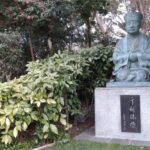

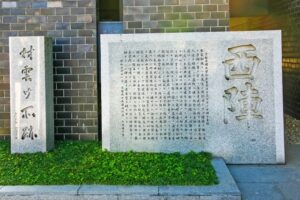
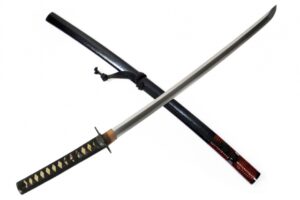
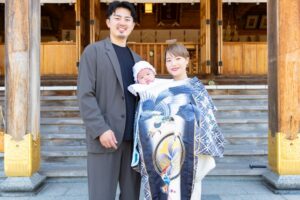

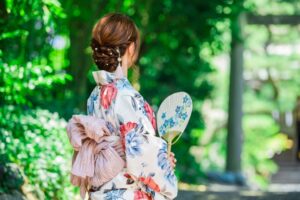
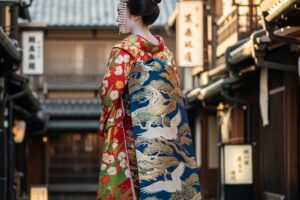

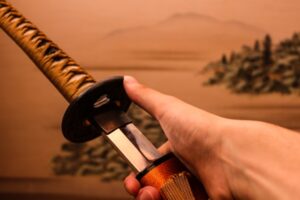
コメントを残す